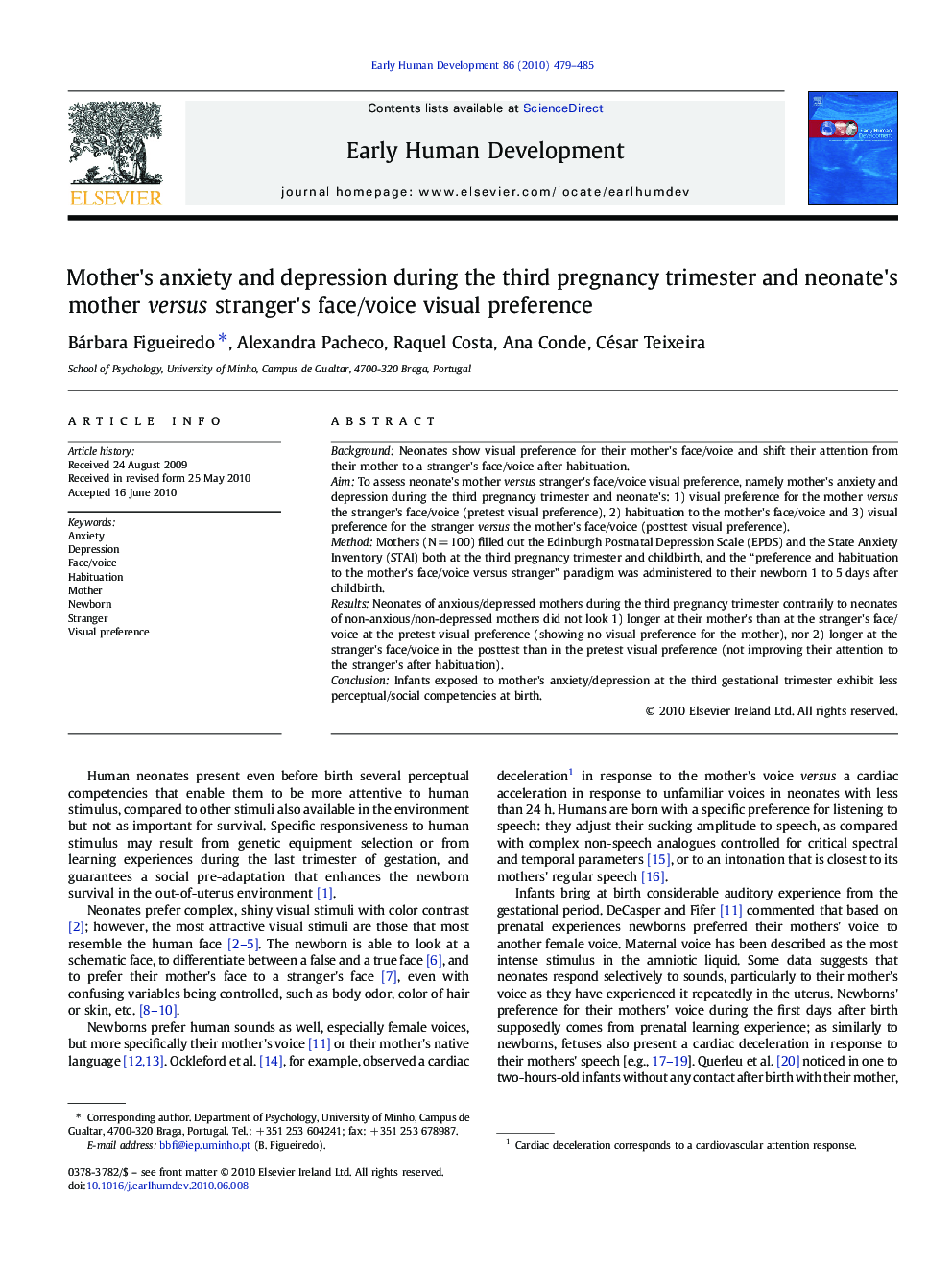| Article ID | Journal | Published Year | Pages | File Type |
|---|---|---|---|---|
| 3917601 | Early Human Development | 2010 | 7 Pages |
BackgroundNeonates show visual preference for their mother's face/voice and shift their attention from their mother to a stranger's face/voice after habituation.AimTo assess neonate's mother versus stranger's face/voice visual preference, namely mother's anxiety and depression during the third pregnancy trimester and neonate's: 1) visual preference for the mother versus the stranger's face/voice (pretest visual preference), 2) habituation to the mother's face/voice and 3) visual preference for the stranger versus the mother's face/voice (posttest visual preference).MethodMothers (N = 100) filled out the Edinburgh Postnatal Depression Scale (EPDS) and the State Anxiety Inventory (STAI) both at the third pregnancy trimester and childbirth, and the “preference and habituation to the mother's face/voice versus stranger” paradigm was administered to their newborn 1 to 5 days after childbirth.ResultsNeonates of anxious/depressed mothers during the third pregnancy trimester contrarily to neonates of non-anxious/non-depressed mothers did not look 1) longer at their mother's than at the stranger's face/voice at the pretest visual preference (showing no visual preference for the mother), nor 2) longer at the stranger's face/voice in the posttest than in the pretest visual preference (not improving their attention to the stranger's after habituation).ConclusionInfants exposed to mother's anxiety/depression at the third gestational trimester exhibit less perceptual/social competencies at birth.
